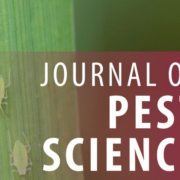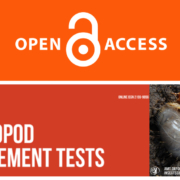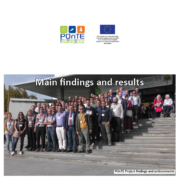Spittlebugs as vectors of Xylella fastidiosa in olive orchards in Italy
ORIGINAL PAPER
Daniele Cornara. Department of Soil, Plant and Food Sciences, University of Bari Aldo Moro, Bari, Italy
Maria Saponari. Institute for Sustainable Plant Protection, National Research Council (CNR), Bari, Italy
Adam R. Zeilinger. Department of Environmental Science, Policy and Management, University of California, Berkeley, CA, USA
Angelo De Stradis. Institute for Sustainable Plant Protection, National Research Council (CNR), Bari, Italy
Donato Boscia. Institute for Sustainable Plant Protection, National Research Council (CNR), Bari, Italy
Giuliana Loconsole. Department of Soil, Plant and Food Sciences, University of Bari Aldo Moro, Bari, Italy
Domenico Bosco. Department of Agriculture, Forestry and Food Sciences, University of Turin, Grugliasco, Italy
Giovanni P. Martelli. Department of Soil, Plant and Food Sciences, University of Bari Aldo Moro, Bari, Italy
Rodrigo P. P. Almeida. Department of Environmental Science, Policy and Management, University of California, Berkeley, CA, USA
Francesco Porcelli. Department of Soil, Plant and Food Sciences, University of Bari Aldo Moro, Bari, Italy
Abstract
The recent introduction of Xylella fastidiosa in Europe and its involvement in the Olive Quick Decline Syndrome (OQDS) in Apulia (Salento, Lecce district, South Italy) led us to investigate the biology and transmission ability of the meadow spittlebug, Philaenus spumarius, which was recently demonstrated to transmit X. fastidiosa to periwinkle plants. Four xylem-sap-feeding insect species were found within and bordering olive orchards across Salento during a survey carried out from October 2013 to December 2014: P. spumarius was the most abundant species on non-olive vegetation in olive orchards as well as on olive foliage and was the only species that consistently tested positive for the presence of X. fastidiosa using real-time PCR. P. spumarius, whose nymphs develop within spittle on weeds during the spring, are likely to move from weeds beneath olive trees to olive canopy during the dry period (May to October 2014). The first X. fastidiosa-infective P. spumarius were collected in May from olive canopy: all the individuals previously collected on weeds tested negative for the bacterium. Experiments demonstrated that P. spumarius transmitted X. fastidiosa from infected to uninfected olive plants. Moreover,P. spumarius acquired X. fastidiosa from several host plant species in the field, with the highest acquisition rate from olive, polygala and acacia. Scanning electron microscopy (SEM) revealed bacterial cells resembling X. fastidiosa in the foreguts of adult P. spumarius. The data presented here are essential to plan an effective IPM strategy and limit further spread of the fastidious bacterium.
Published on July 12, 2016 by JOURNAL OF PEST SCIENCE







